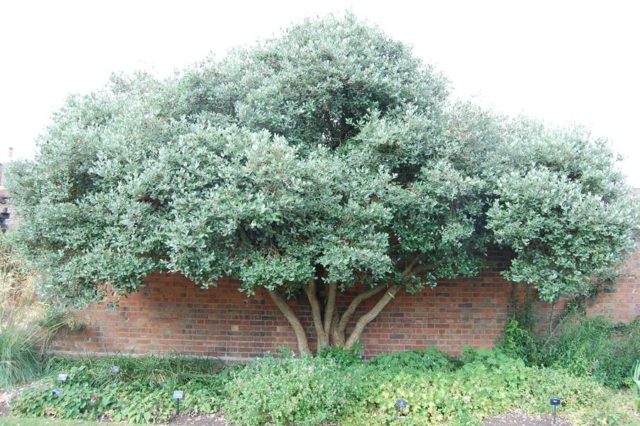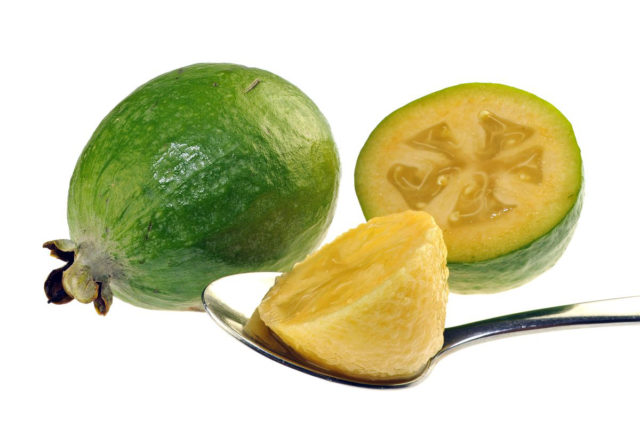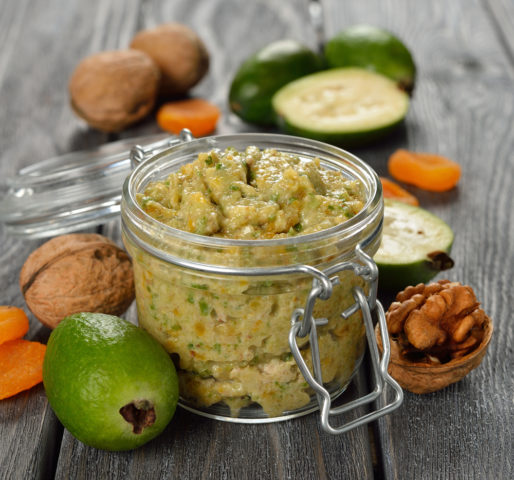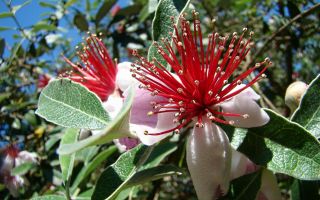Content
Feijoa for children from the age of 1.5-2 years can be safely introduced into the diet. True, this should be done gradually, given that the berry has some limitations and contraindications. It is also necessary to take into account possible allergic reactions from a fragile child's body and follow the rules for using feijoa.
Can feijoa be given to children

For many Russians, the berry is an exotic fruit. Feijoa is brought to our country from Georgia, Armenia, Azerbaijan, and some other countries. The taste of the fruit is noted by many as pleasant, strawberry-banana with hints of pineapple, the smell is very fragrant. Parents wonder if it is possible to feed children with such a berry.
Doctors note that feijoa is rarely the cause of allergic reactions in children and adults. The berry does not contain toxic substances and harmful components. However, it should be introduced into the diet of babies gradually, while observing the mucous membranes, skin and stool of the baby. If in a day or two there are no undesirable reactions from the body, then you can carefully increase the portion. There is always the possibility of individual intolerance to the product.
Feijoa value and composition
The calorie content is only 49 kcal. The nutritional value of the product comes from proteins, carbohydrates and fats. B and G 1% each, Y about 11% per 100 g of product.
Feijoa is a unique product in terms of chemical composition. The berry contains the following vitamins: thiamine, riboflavin, adermin and water-soluble niacin. Feijoa significantly surpasses many citrus fruits in ascorbic acid content, therefore it stimulates the immune system of children well.
Of the minerals, feijoa contains:
- calcium;
- potassium;
- iron;
- iodine;
- manganese;
- magnesium;
- sodium;
- phosphorus;
- zinc.
The pleasant sour taste of the berry is due to folic and malic organic acids in the product.
Why is feijoa useful for children

The beneficial properties of feijoa berries for children are due to the rich composition of this product:
- Due to the high iodine content, the fruit pulp is especially recommended for children lacking this substance. The element that is part of feijoa is much easier for a young body to absorb and has a positive effect on the development of the thyroid gland.
- B vitamins help children's muscles develop harmoniously. Also vitamins have a positive effect on the nervous system.
- Ascorbic acid strengthens the immune system, which is especially important in the autumn-winter period.
- Due to its low calorie content, feijoa can be consumed by children with signs of obesity. The berry is able to stimulate the metabolic processes of the body thanks to the riboflavin included in the composition. It has a positive effect on the heart and blood vessels of babies.
- The tannins and organic acids of the fruit stabilize the digestive processes in the gastrointestinal tract.
The rich vitamin and mineral composition of the product allows you to successfully fight vitamin deficiencies. Therefore, from a certain age, feijoa can and should be introduced into the diet of children, after consulting a pediatrician.
At what age can a child be given feijoa
Despite the rich vitamin and mineral composition of the product, the absence of allergens and toxins, parents should not forget that each baby may have an individual intolerance, an allergic reaction to feijoa. In addition, the berry is exotic for Russia. This is a good reason to give feijoa to children gradually, starting from 1.5-2 years old. As a rule, at this age, parents already know how prone their baby is to allergies.
Rules for introducing feijoa into the children's diet

Any new product can harm children. It is impossible to predict in advance how the child's body will react. For this reason, the berry should be introduced into the diet with caution, observing the reaction. If there is a tendency to allergies, then you should not give the berry to children under 3 years old. It will not be superfluous to consult a specialist.
How not to give feijoa to children
Introducing fruits into the diet of children, especially for the first time, you need to keep in mind some rules for the use of this berry:
- feijoa should only be mature;
- you cannot combine them with dairy products;
- children can be fed exclusively with pulp, without using the peel;
- freshly squeezed juice can disrupt digestion.
The peel of the fruit is well suited for preparing compote, infusion, tea and jam, since it is also not devoid of useful substances. However, it is not recommended to use it fresh, and even more so to offer it to children. To prevent freshly squeezed juice from causing trouble for the baby's body, it must be slightly diluted with boiled water.
Limitations and contraindications
Despite its many useful properties, feijoa has a number of contraindications and restrictions for children. As a rule, they are associated with misuse of fruits, unripe or rotten berries, use of the peel. It is important to introduce them into the diet correctly, gradually, observing the reaction of the body. Children should not be given other new foods for several days after consumption. If an allergy or digestive upset begins, it will be clear that it is caused by the berry. With great care and with the permission of a pediatrician, you can use the fruit for children with diabetes, hyperthyroidism, some pathologies of the stomach and intestines.
Selection and storage rules

The best time to buy fruit is during the fall months. During this period, they mature and enter the Russian markets. When choosing a berry, you need to pay attention to the following:
- feijoa should be firm, smooth, with a whole skin;
- color - saturated green;
- the flesh on the cut is transparent;
- the shape of the berry is elongated, oval;
- the peel is slightly wrinkled.
The most valuable fruits are those that are larger than the rest. They must be washed and peeled before use. You can store the berries in the refrigerator in the fruit and vegetable compartment. Fruits can remain fresh for several days at room temperature, especially if they were purchased slightly unripe. For long-term storage, they should be frozen or processed.
Conclusion
Feijoa for children from the age of 1.5 - 3 years can be added with caution to food. In the presence of any acute chronic pathologies, this should be done after consulting a doctor and taking into account contraindications and restrictions.The berry has a lot of useful qualities, and its taste and aroma will not leave children indifferent.

